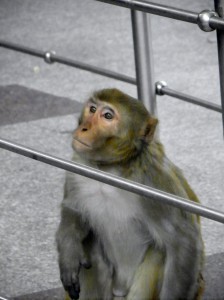Lisa Niver's Blog: We Said Go Travel, page 392
May 3, 2014
Stay Green: How to Master Eco-Friendly Travel
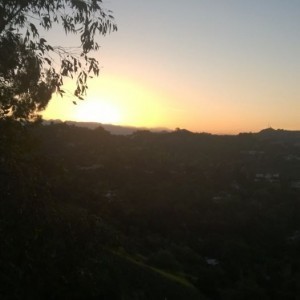 Stay Green: How to Master Eco-Friendly Travel
Stay Green: How to Master Eco-Friendly Travel
A vacation is a time of relaxation, exploration, and all-round merriment. However, our stress-free vacation can have a great impact on everyone and everything around us, especially the environment.
However, the good news is that there are ways that you can reduce your carbon footprint without having to compromise on your long-awaited trip. Here are some ways to stay green while travelling.
Consider the little things There are many ways to book a green vacation and you don’t have to make huge sacrifices in order to do so. Some of the little things that you can do include:
Leave no trail. Whatever you bring, make sure to either bring back or dispose of carefully. The sight of you picking up after yourself might just be enough to convince someone else to do the same.
Bring your own toiletries. Those little plastic bottles can build up, especially since many hotels replace them every day, no matter if they are only partly used. Using your own toiletries not only cuts down on waste, but also reminds you of home whilst you’re away.
Bring your own water bottle. As long as you’re travelling to a place that has consistent access to clean water, bringing your own reusable water bottle will help cut down on waste and landfill.
Choose your destination wisely
There are some cities that have taken a real interest in sustainability. There are also areas that have built eco-friendly resorts. Take Auckland, New Zealand. It’s a great example of how a large city can have eco-friendly lodging, even in the middle of the city center. From solar-powered hotels to 2 person yurts, there are many accommodation options for travellers to choose from, and flights to Auckland are actually pretty affordable, so if you want to see a sustainable city at its peak head there is summer.
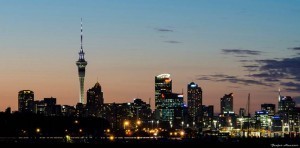 Auckland from Mission Bay, image by Jaafar Alnasser, shared under a Creative Commons Licence
Auckland from Mission Bay, image by Jaafar Alnasser, shared under a Creative Commons Licence
Other, more out there eco-friendly areas are:
Borneo. The government has focused heavily on eco-friendly tourism, which is why many of the resorts are completely self-sustainable. You’ll find eco-friendly tours and all manner of activities that bring you closer to nature, all with the help of locals. You’re liable to see all kinds of creatures, with orangutans, elephants, and leopards all prowling the jungle.
Australia. In the Greater Blue Mountains Area, a short distance from the hustle and bustle of Sydney, nature runs free. With a wealth of eco-friendly lodges sprinkled throughout, this UNESCO world heritage site is a view into the diversity of life in Australia. Deep cliffs and inaccessible valleys define the landscape, while rare flora and wildlife bring together the community.
As you can see, a green vacation can be easy to achieve. A little planning goes a long way, and a simple online search can find eco-friendly lodging in most areas. Every little thing helps, because after all, we only have one Planet Earth.
About the Author: Steven Shue is a nature lover and passionate traveller looking for ways to minimise his carbon footprint, one country at a time. When not traveling, he can usually be found in a library or on the beach.
The post Stay Green: How to Master Eco-Friendly Travel appeared first on We Said Go Travel.
Heaven and Hell in a Day in Cambodia
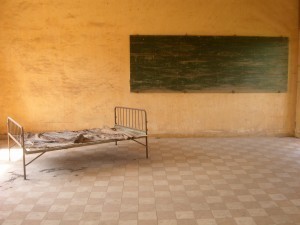 As kids – Vietnamese refugees in Connecticut – our parents warned us not to get too tan: “You’ll be dark like a Cambodian,” they’d sigh after we had baked outside all day. So when, decades later, I swerved into Cambodia from my Vietnam-to-Thailand path, I didn’t expect much. I wasn’t a backpacker who considered himself a world traveler but in reality just treated third-world countries as dive bars with interesting scenery, spending my hours drinking, smoking, clubbing, flirting. Still, I wanted fun. I bought and ate a deep-fried tarantula on the bus ride to Phnom Penh, just so I could brag about it later. I traveled on the cheap – squatting over beat-up suitcases along with a group of Malaysian pilgrims, the smell of gasoline coming through the cracks of the bus windows – just because the image was funny to me.
As kids – Vietnamese refugees in Connecticut – our parents warned us not to get too tan: “You’ll be dark like a Cambodian,” they’d sigh after we had baked outside all day. So when, decades later, I swerved into Cambodia from my Vietnam-to-Thailand path, I didn’t expect much. I wasn’t a backpacker who considered himself a world traveler but in reality just treated third-world countries as dive bars with interesting scenery, spending my hours drinking, smoking, clubbing, flirting. Still, I wanted fun. I bought and ate a deep-fried tarantula on the bus ride to Phnom Penh, just so I could brag about it later. I traveled on the cheap – squatting over beat-up suitcases along with a group of Malaysian pilgrims, the smell of gasoline coming through the cracks of the bus windows – just because the image was funny to me.
I got off in Phnom Penh, paid a dusty man on a motorbike to take me to the killing fields, just so I could check them off my list. We have one hour, I said, pointing at my watch. He laughed and nodded. He had no front teeth. He waited outside while I walked into the killing fields and into the past.
In the year I was born, the communist Khmer Rouge regime had hacked hundreds of thousands of “revolutionaries” into pieces and shoved them into the ground. Thousands of human skulls had been dug up and stacked neatly on shelves. Now, it was totally quiet, and butterflies were looking for nectar from the flowering bushes. How could a place so gruesome be so beautiful at the same time? I sat on the ground to rest, and noticed human teeth in the dirt next to me.
I went to the school Pol Pot had turned into a butcher shop for revolutionaries. Metal bed frames with shackles had replaced desks. Posted security rules read: “Don’t be fool for you are a chap who dare to thwart the revolution” and “While getting lashes or electrification you must not cry at all.” As I stepped up to the photo galleries of genocide victims, with their Cambodian features looking back at me, I thought for a second they recognized me, and I recognized myself in them. I broke off eye contact. Back outside, the dusty man pointed at my watch and laughed (he didn’t have one). Five, he gestured with his outstretched fingers. I had stayed five hours.
If Phnom Penh showed me how ugly humans could be, Angkor Wat, only a few hours away, showed me how beautiful they could be, too. It is a city of temples, the biggest in the world. For two full days – I made sure to watch the sun rise and set each day – I walked through the temples, got lost inside of them, and admired the enormous stone reliefs of women and men praying with elaborate head gear, peaceful faces carved into stone stacks, and carvings of elephants, leaves, and story scenes. In one temple, the large roots of trees had woven itself into the stone structure altogether, uniting live wood with dead stone in a contradiction.
On my final night in Cambodia, I realized I had stayed a week and not a day, as I had originally planned. That is what Cambodia did to me: It took away my sense of time to remind me how beautiful and how ugly we could be at the same time, how good and how evil, and how we have been alike whether a generation or a thousand years ago. I walked to a night market to buy skewers of food – meat balls, shrimp, and tofu. In the middle of the square, people had placed straw mats, and lanterns softly lit up the eating area. I sat with a group of local teens, and we ate and smiled, and shared our lives in broken English while I looked up Khmer phrases in my travel guide to patch together sentences. Under the big diamond-studded night sky, couples were laughing, babies were crying, men were telling stories, merchants were selling beads. If I could save time in a bottle, as the Jim Croce song goes, I’d spend it all in Cambodia. After a week of silence in hell and in heaven, with devils and with angels, it was good to hear human noise again.
About the Author: Alexander Nguyen is a lawyer in Washington, D.C. His next trip is to Yongan, Myanmar.
Thank you for reading and commenting. Please enter our next Travel Writing competition and tell your story.
The post Heaven and Hell in a Day in Cambodia appeared first on We Said Go Travel.
May 2, 2014
Live in London or Die Trying
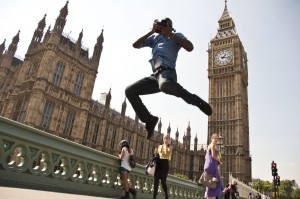 I now cherish time ever since time was nearly taken away from me.
I now cherish time ever since time was nearly taken away from me.
I am in the passenger seat, flustered and frustrated, wondering why the driver that the bride’s father hired keeps missing the proper turns. I have to photograph this wedding and I need to be on time. I politely ask why he’s not taking the correct directions to the Decatur, GA hotel. He stops responding to me. “Sir, what are you doing??” I ask repeatedly, angry and scared. His eyes are still open, his hands still on the wheel. Our car began swerving over lane lines, now onto incoming traffic, with several cars veering violently out of harm’s way. It lasts for at least a minute and a half and through at least four traffic lights. I thought there was nothing I could do but face death or dire injury…until the will to live kicked in. Still frightened senseless, I grab the steering wheel from my seat, carry my leg over to locate the brakes and steer the car on a grassy patch adjacent to the hectic highway…the highway we should have been on had he not missed his turns.
The firefighters that arrived discovered he went under a diabetic coma while driving. We cheated death that day…and the event illuminated how I have cheated myself from living the life I really want. That day on November 2013 taught me that time is too finite to not follow your bliss. Traveling the world and living abroad in London, the truest home in my heart, does not seem as unreasonable anymore.
Time well spent, I have learned, is time used to live your dreams…whatever or wherever that may be. Begin asking me “If you could live anywhere…” and I would most likely interject, blurting “London!” with fervor and conviction. My love for this city transcends the common praise points of other foreign tourists (The double-decker buses! The history! Those lovely accents!). No: London transforms me. Like some hypnotic hold, I visit London and magically begin living life the way I should without deliberate effort. My calculated Capricorn nature surrenders to a spontaneous, blissful version of myself as soon as I land in Heathrow.
London is an unpredictable metropolis. You could set intentions on your first study abroad trip and talk to a cell phone rep, the first person you meet in London, to get a UK phone and move along. Instead, you hit it off, attend the guy’s church and befriend nearly everyone, and five years later receive an invitation from London to Atlanta asking to fly up and attend his wedding (it was a lovely one, too). You could find yourself impatiently waiting on a traffic-ridden bus to get back to your host’s flat after leaving monstrous summer jam Notting Hill Carnival (the largest festival in Europe). You could then strike up conversation with two grad school city-dwellers seated behind you and get invited to hang with them in dodgy Dalston, whisked away unknowingly into a classic rock karaoke night where a loopy male patron summons you ballroom dance with him to the sounds of INXS. Everyday is an adventure in this city, and it has taught me how to let go and let life lead.
It is also the several kinds of people I meet- fascinating, cheeky, progressive, eclectic- that makes visiting London such a dream. Connecting with Londoners feels like connecting with the entire world. And it is an integrated world. There are countless moments where I am partying in East London with native Bangladeshis, Nigerians, Italians, Koreans, Pakistani, etc., all socializing and enjoying their time together without a modicum of cultural tension. As corny as it sounds, I truly do feel one with the world here, and no other destination comes close.
I do not want to die wishing I had traveled more. I do not want to die merely wanting to live in the city I adore with my every being. I let my London friends know days after the car incident that I decided to visit the following month. I did not care about the travel expenses as much as I cared about being where I wanted to be…where I belonged. I spent this past Christmas, New Year’s Eve/Day and birthday celebrating with my amazing group of London lads and basked in the bliss of being “home”. During that trip, I let my friends there know about some very big news:
“So…I’ve decided to move to London by the end of this summer.”
The collective response:
“That doesn’t surprise me at all. You know you’re a local at heart! It’s about time.”
It is indeed time, for the right time to live my greatest life- while I have time- is right now.
–Travis Levius
About the Author: Travis Levius is an international photographer and inspiration/travel writer with a really big itch to visit 10 new countries this year.
Thank you for reading and commenting. Please enter our next Travel Writing competition and tell your story.
The post Live in London or Die Trying appeared first on We Said Go Travel.
My Prayer Wheel in Tibet
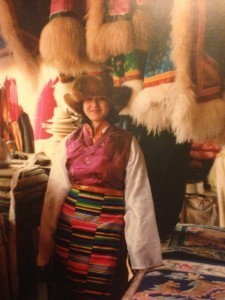 Miles off into the distance, atop a snow-capped mountain and beneath a clear blue sky, was a brightly colored two-story wooden Tibetan house where I was to spend my holiday week away from Beijing. I was fifteen years old. It was the winter of 1999. And I was oceans and worlds away from home – Chicago – studying abroad in China. My Chinese school had arranged a home stay for me at the wooden Tibetan house, which I was told had no bathroom, running water, or heat. Having just spent the last ten months resisting breathing in the coal-infused air of Beijing, I was like an air starved child breathing in as much of the clear blue Tibetan skies as I could get.
Miles off into the distance, atop a snow-capped mountain and beneath a clear blue sky, was a brightly colored two-story wooden Tibetan house where I was to spend my holiday week away from Beijing. I was fifteen years old. It was the winter of 1999. And I was oceans and worlds away from home – Chicago – studying abroad in China. My Chinese school had arranged a home stay for me at the wooden Tibetan house, which I was told had no bathroom, running water, or heat. Having just spent the last ten months resisting breathing in the coal-infused air of Beijing, I was like an air starved child breathing in as much of the clear blue Tibetan skies as I could get.
Hours whizzed by as I passed groups of yak, made my way to the wooden house in the distance and the sky turned grey, time seemed to stand completely still. Before I could knock on the ornately carved door of the home, a young boy I would come to know as “Samdup” leaped from the ledge of the second story down to where I was standing and stood just staring with a curious and fearless smile. A beautiful, shy Tibetan woman with tan leathery skin opened the door and welcomed me in. The next several days were spent learning to make traditional Tibetan staples (yak, and yak butter tea, which is made from yak milk), sharing the best of American music (Mariah Carey) on my walkman with my Tibetan family, exchanging dance moves – several songs of Tibetan cham dance were followed by the Macarena and country line dancing. But what I recall most vividly of my time in Tibet was watching Samdup put on a serious face and turn a Tibetan prayer wheel, which is a cylinder with sacred Buddhist prayers written on it. Each revolution of the wheel is counted as a prayer and is used to accumulate good karma and get rid of bad karma. Samdup was the eldest child in his family and underneath the playful, curious, youthful exterior, lived an older Samdup with signs of age from his quiet anger about the uncertain independence of his people. Beyond the clear blue skies and snow-capped mountains, were overrun towns with the influence of China everywhere: Chinese karaoke bars, Szechuan restaurants, and 24 hour internet cafes.
Even though we shared no common languages (Samdup spoke no English, Mandarin, or Vietnamese), Samdup and I became good friends feeding the yak together in the morning, churning our yak butter tea in the afternoon, turning our prayer wheels at night, and telling stories with our eyes and expressions. The thought of my slice of heaven – the clear blue skies, the frosted mountains with snow pure enough to eat – one day disappearing and being replaced with big-box stores from the Mainland – was devastating. I picked up Samdup’s prayer wheel and began to turn it with all my might. Waves of faded memories of my parents fleeing Communist Vietnam by boat in the 1980s washed over me; I suddenly recalled that an uncle in Vietnam spent 10 years imprisoned in solitary confinement for his religious beliefs; I saw my mother running through a dark jungle – barefoot, pregnant with me in her womb, and holding my two elder siblings – to get away from Vietnam and away from the political persecution she faced if she had stayed. I thought of the prayers my mother desperately chanted as her boat began to sink – just moments before a U.S. Navy ship sailed by and plucked her out of the unforgiving South China Sea to bring her to the United States, where I was born weeks later. My mother’s prayers apparently had been answered after all. Maybe mine would be too.
On my final day, as I packed up my gear to say goodbye to the colorful wooden Tibetan home and all of the wonderful people inside it, Samdup and I exchanged gifts: a walkman with a Mariah Carey mixed tape for him, a bone from his favorite yak for me. After hours of trekking, the wooden house was now a speck in the distance, drowned out by the serene silence and overwhelmingly blue sky. I turned a corner, and walked through a tall brick gate that marked the end of the village and the beginning of the town, spotted a 24 hour internet café and gave in to my 21st century needs. I opened a browser and searched on google, “Samdup.” The words “fulfillment of one’s wishes” returned. I smiled curiously to myself and got up to head to the train station back to Beijing, feeling so fulfilled, so inspired, and so full of determination to take on the next day’s challenges.
About the Author: Ha-Thanh Nguyen is a Vietnamese-American attorney practicing law at an international law firm in Washington, D.C. She loves to create art, whether it be a brilliant argument, drawing, or essay that evokes emotion in its viewers. On her free time, she can be found in an art gallery or a cool coffee shop.
Thank you for reading and commenting. Please enter our next Travel Writing competition and tell your story.
The post My Prayer Wheel in Tibet appeared first on We Said Go Travel.
My Addiction to Hong Kong
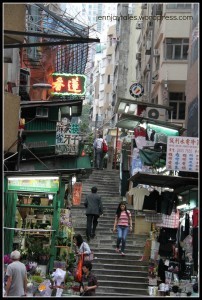 Hi, my name is Jennifer and I am an addict. I am confident my addiction is unlikely to destroy my health or leave me without a roof over my head. My addiction is Hong Kong.
Hi, my name is Jennifer and I am an addict. I am confident my addiction is unlikely to destroy my health or leave me without a roof over my head. My addiction is Hong Kong.
How do I know this?
Well, I love to travel and nothing stirs the butterflies in my stomach more than knowing I am about to visit a new country, or an undiscovered place in my own country. For the last five years I have undertaken an annual pilgrimage to Hong Kong and each year the familiar feeling of anticipatory excitement stirs within me. I will never tire of this crowded, intoxicatingly busy, thriving metropolis. I am hooked.
So why Hong Kong and why do I never tire of spending time there?
With a population of seven million contained within 1,100sq km (425 sq miles) Hong Kong is one of the most densely populated areas in the world. No surprises then, visitors from smaller cities (like me) may feel when in Hong Kong, an overwhelming sense of people closing in on you. But despite the constant flow of people wherever you go in Hong Kong, peaceful and green places are in abundance if you feel the need to escape. This contrast is at the heart of my attraction to Hong Kong. The busy hustle, bustle of congested traffic, exhaust fumes and people all seemingly moving at once, is counter-balanced by the choices of serene places, that provide a sense of solitude and a sanctuary of calm in this world city.
I love the profusion of people in Hong Kong. I am from Brisbane with a population of just over two million. But there are times when Hong Kong’s pace feels too much. A 45 minute ferry ride transports you to Lantau Island, where life is considerably slower and there are fewer people.
I also enjoy Hong Kong’s sense of order and the feeling of safety. They have one of the best (and easiest to use) transport systems in the world. This creates an efficient flow to move all those people and is an easy means of getting around.
On my first morning in Hong Kong, I was staying in mid levels (Central District on Hong Kong Island). Waking early, I could not wait for my friend to join me. Being a resident, I knew he wouldn’t share the same first time excitement. I set out on my own to begin investigating the city. I walked the narrow, winding streets in mid levels and stumbled upon the Man Mo Temple, on Hollywood Road. I had no map, just a sense of smell and an insatiable curiosity. The incense burning in giant cones suspended from the ceiling drew me in. This 18th Century Temple is an example of one of the many serene pockets hiding in this fascinating city.
My visits to Hong Kong are enhanced by friends who live there. A couple of ex-pats whose circle of friends I now call my own, allows me to immerse myself deeper in the everyday life and culture that is Hong Kong. I have also visited as a Tourist, staying in Hotels with companions from Australia. From these frequent visits, I have gained a familiarity with the place, even learning their mini bus system, hailing them like a local pro.
One close friend is a Cantonese local, born in Hong Kong. Thanks to her fabulous ability to translate, I have indulged in and learnt the real meaning behind some incredible experiences – many of them food orientated.
Hong Kong has culinary credentials. No matter what time of the day or night you can find somewhere offering a fabulous dining treat. An Australian friend and I had a few extremely late-night shopping expeditions. Unlike Australian retailers, the Chinese are keen sales people and the market places and department stores are usually open after 10pm. Despite it being almost 11pm the shops and streets were crowded with people. I am convinced the ocals don’t wish to return to their small apartments, (new Hong Kong flats average 11sqm (120 sq feet) in floor space,) so they stay out until it is time to sleep.
Food places are open all hours. Locals and tourists are eating late at night. In central we found cute bars and restaurants along Gough Street and ended up stopping in Soho for a delicious Chinese dim sum meal. Lan Kwai Fong (LKF to the locals), adjacent to Central, is the place to go and have an after dinner drink. It was close to midnight and the place was buzzing.
Hong Kong provides new discoveries with each visit. There is never a feeling of repetition or sameness. It is an addiction I will openly admit to, happily share and continue feeding.
After all, life should be full of no regrets.
About the author: Jennifer Johnston juggles pursuing her passion for writing with working part-time outside of the writing world. Favourite writing topics include travel, health and well being and fitness. She spends her week-ends (trying) to keep her three rowdy boys in line and finding time to search out new writing material.
Thank you for reading and commenting. Please enter our next Travel Writing competition and tell your story.
The post My Addiction to Hong Kong appeared first on We Said Go Travel.
May 1, 2014
This thing called Art in Spain
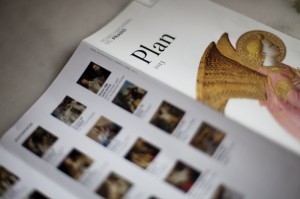 If it weren’t for the seductive combination of moist grass and temporary sunlight, I’d be at the start of the line with a direct view of Diego Velasquez’s sculpted derrière. But I took the badly timed power nap, and now the line has gone from barely there to Black Friday. But if there was ever a list of places where waiting could be as good for your quads as it is for your eyes, the Museo del Prado’s garden walkway will probably figure in that list.
If it weren’t for the seductive combination of moist grass and temporary sunlight, I’d be at the start of the line with a direct view of Diego Velasquez’s sculpted derrière. But I took the badly timed power nap, and now the line has gone from barely there to Black Friday. But if there was ever a list of places where waiting could be as good for your quads as it is for your eyes, the Museo del Prado’s garden walkway will probably figure in that list.
For most of Madrid this is a Friday, for me it’s a museum free day. Once the gates open at five, I am quickly led through a neo-classical building and into the lobby, where already, a respectable crowd of full-ticket buying museum aficionados throng.
I quickly grab a brochure. There is a painted angel on the front – porcelain skin, golden curls, a silken robe, and wings. Perhaps, an ironic representation of the hell that awaited me inside – Nobody sees a museum, not in the least the Prado, in two hours. The five-fold brochure opens up to a plan of the entire museum replete with color-coded boxes, numbered rooms and a visual aid – thumbnails of masterpieces and their corresponding rooms.
Goya, Velasquez, El Greco, Rubens, Poussin – assigned to some simple classroom arithmetic – Room 36, Room 10, Room 29, Room 8b, Room 3. There are 50 works on the list.
I cruise through the first room like a passenger on a train that traverses a scenic countryside. I survey canvases as if they were the nameless facades of tiny hilltop villages, acknowledging their beauty but losing sight as the train chugs past. But with every passing picture, my pace weakens. The accessories around these masterpieces change – the walls go from green to white to red. The frames turn from gilded gold to decaying wood, but the art within is constantly complex, and for someone who’s spent a childhood of tracing bugs bunny from backlit computer screens, it’s wholly remarkable.
There are portraits of statesman, cardinals, and court jesters painted with strokes of fierce reality. The eyes seem to follow you everywhere; the somber expression, the linear lips in place of a full smile, and a 16th century aristocracy that at times seem so real that I can almost imagine them indulging in a cross-canvas conversation mocking my bourgeoisie viewing of their art.
I stumble upon the “Three Graces” by Rubens. A triplet of statuesque women who stand confident in their nakedness – sweeping strokes outlining the beauty of their believable bodies – childbearing hips, generous thighs, a slight swelling of the stomach. I wish someone would put this on the cover of Vogue.
I rummage through the maze of masterful art – flexed muscles, taut hamstrings, pointed arms, flowing silks, rounded faces, graceful arabesques, crucifixions, kings, queens, angels, battles and a hyper-realistic corn on cob. But I’m blissfully unaware that somewhere between rooms 11 and 14, like a clearing in the woods that reveals a cerulean lake, I’d find her. Two hours ago if I’d been told that a portrait of a pubescent Spanish royal and her entourage of handmaidens could knock me of my feet, I would have been skeptical. But here I am, with dilated pupils, almost certain, that this must be the work of a time-traveling photographer. The “Las Meninas” is the grandest of Velasquez’s work – in size and appeal – a painting inside a painting, but it is perhaps, the grandest in spirit. They say there is a rite of passage when you go from an art grazer to art lover – you don’t need an esoteric education or proficiency in brush-wielding – all you need is a spoonful of wasabi in your mouth – something to blow your mind. I stand there for several minutes before the call for closing begins – I know it isn’t time to go. I also know that it means it’s time to come back.
About the Author: Sruthi Vijayan is a photographer and a writer. She lives in the scorching South Indian city of Chennai and hence freezes at a not so cold 20°C.She travels to please her insatiable need for great food and awesome people.
Thank you for reading and commenting. Please enter our next Travel Writing competition and tell your story.
The post This thing called Art in Spain appeared first on We Said Go Travel.
Winter’s Women in New Zealand
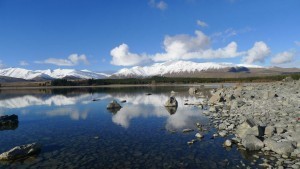 We gingerly made our way across the jagged rocks, in the hopes of finding a spot to watch the sun go into hiding behind snow-capped mountains. James, the Australian dude who ran the hostel for food and lodging, was walking with us. You stopped to admire a tree, smooth and dry in the dead of winter.
We gingerly made our way across the jagged rocks, in the hopes of finding a spot to watch the sun go into hiding behind snow-capped mountains. James, the Australian dude who ran the hostel for food and lodging, was walking with us. You stopped to admire a tree, smooth and dry in the dead of winter.
James noticed and told us: “Plants native to New Zealand are evergreen. The ones that look dead are intruders.”
“If I was a visiting plant, I would stay here too,” you mused.
By the time we settled ourselves on a piece of rock large and smooth enough for us to share, the golden evening was fading into a dusty pink night. We set down the bottle of Pinot Noir and drew our parkas up as the night grew cold. Behind, James was filling up the bird table with leftovers from the hostel kitchen. The harsh winter can be difficult for them, a sign near the bins explained the first night we checked in, so any scraps would be welcome. A few minutes later, we heard his boots rustle through the dead grass as he headed back.
We were not the only ones who noticed- a startled brown hare popped up a few feet away. It glanced at us nervously before disappearing.
Down the rabbit hole it goes, I thought, fascinated. It was the first time I’d seen a wild hare- larger than rabbits, this one a creamy wheat colour. “It’s exactly how Enid Blyton had described!” I whispered excitedly. I wonder how it feels to appear and disappear in the blink of an eye.
Apart from that disturbance, our surroundings were still. We sat with our knees tucked under our chins and I watched the lake change from a clear, brilliant blue to black and glittery and alive.
The wine was already half gone by the time we noticed the stars. You were busy looking at the scene through your viewfinder, and I was busy drinking in that rare and beautiful look of concentration on your face. While we were preoccupied, the stars had crept shyly out of the absolute darkness of the sky. The scattered pinpricks seemed to me the authentic version of what jewellers hope to achieve when they spill a bag of diamonds across velvet. I gorged on the dazzling sight. You were fiddling with the camera, but this can only be imprinted with eyes and heart.
My gloved hands sought yours out. “Just enjoy it now.” Your hands were warmer than the heating pads I had stashed in various pockets.
“I don’t want to forget this feeling,” you said, finally setting the camera down. I watched the white puffs of air snaking out of your mouth, and felt a strange sorrow.
I had suspected for a while but this was the moment I knew I had to do it. When was the last time you stared at me with such wonder in your eyes? A woman knows when someone has fallen out of love with her. The scenery is bewitching, and I knew that was all you would take away. Years from now, you won’t remember the feel of my shoulder pressed against yours as the cold swirled around us, or the way my eyes glittered in wonder and sadness on this night, because you don’t even notice it now. Travel shows us mesmerizing new places, and long-time love should beguile the same way. It is hard to love in the face of daily life, but from time to time, we deserve to be gazed at with wonder. And when was the last time you really looked at me the way you’re looking at this night?
Mount John was in the distance, and we charted the progress of a pair of headlights winding its way up to the world class observatory deck before we headed back in. Later that night, we tucked our bodies under a blanket that crinkled when either of us moved.
It was below zero degrees outside.
That was the night Lake Tekapo told me to let go of you, and finally catch up with time.
About the Author: Ling Xin enjoys reading, cooking, and rehoming stray animals. She loves to travel, and she writes about her experiences for the Asiarooms community.
Thank you for reading and commenting. Please enter our next Travel Writing competition and tell your story.
The post Winter’s Women in New Zealand appeared first on We Said Go Travel.
Baduy, Indonesia: A world within the world
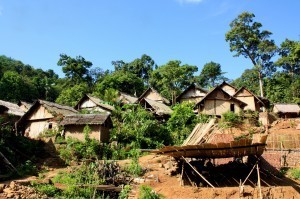 Growing up in one of the biggest cities in Eastern Indonesia left many questions in my mind. Well, I spoke the same language as many citizens nearby, I shared the same cultural stories every time I met, and experienced a city life like other teenagers in my age every day. There are questions to answer in mind, I have to find differences and I have to experience the other cultures. Then, I decided to wander and left my home 7 years ago to the Western Indonesia in Java island.
Growing up in one of the biggest cities in Eastern Indonesia left many questions in my mind. Well, I spoke the same language as many citizens nearby, I shared the same cultural stories every time I met, and experienced a city life like other teenagers in my age every day. There are questions to answer in mind, I have to find differences and I have to experience the other cultures. Then, I decided to wander and left my home 7 years ago to the Western Indonesia in Java island.
During my seven years staying in Java, I can finally realize that I was drawn by curiosities not by books, I always had time to make new friends that speak different languages, I can learn the other cultures, and I’ve finally been in a place where I can’t find traffics, internet connection, no incoming call or even SMS, and no place such a home to stay except a tent while climbing a mountain. But, another curiosities came up in mind, I still can use transportation to visit places, using electricity to turn all my electronic devices on, working with technologies, and still have the same experiences in a city where I grow up and live in as most of my friends had. We were connecting the dots to create almost the same life line.
Early March last year, I packed my backpack, left university, prepared all my stuffs, and traveled alone to find what the answer of curiosities that have been drawn my mind since years ago. Then, I decide to travel but didn’t set up the fixed time when I will end my journey. I was going where the direction guides me. I traveled thousand miles to the North Sumatera, spent more than a month there, moved to East Borneo and spent also more than month. I visited lake, hiking the mountains, jungle forests trekking, sunbathing in the beach, snorkeling to see the coral reefs and marine lifes, city touring to find the histories, and having local interaction in all the places I have visited. Still within a same chapter in the different pages, I need to find a different chapter. I was lucky; while browsing on the internet, I finally found a place called “Baduy, A World within The World.”
Baduy, who call themselves Kanekes, are a community living in the western part of the Indonesian province of Banten, near Rangkas Bitung. It is more than 100 km from the capital city of Indonesia, Jakarta. I was on a train and spent 2 hours to reach the nearest train station from the Village. Then I went to a bus station nearby and go staright to the Village. After1.5 hours on a mini bus, finally a view more steps to go and . . . Welcome To Baduy!
I arrived mid-afternoon inside the village and meet Kang Lambry, a householder who has a wife and one beautiful daughter. I have manythings to know and to find out, and I will figure it out in a long night with Kang Lambry. Well, this house has no electricity just like other houses, its traditionally prohibited to use.
Generally, th Baduy/Kanekes are devided into two groups: The Baduy Luar (Outer Baduy) and The Baduy Dalam (Inner Baduy). They speak Sundanese and become one of the sub-ethinic of Sunda Tribe. Their racial, physical and linguistic traits bear much resemblance to the rest of the Sundanese people; however, the difference is in their way of life and their beliefs.
The people from Baduy Luar (Outer Baduy) are familiar with technology, their housing process is assisted with modern tools, they wear traditional clothes (Black Color) and sometimes they wear T-Shirt, they use modern house furnishing, and some of them have been affected and convert to Islam.
While, the Inner Baduy (Baduy Dalam) hardly prohibit for all those things. Beside that, The Baduy Dalam are also prohibited to use any transportations, footwears, electronic, technology, and even formal Education for the children. They rejected some proposals from government to build facilities in Baduy Dalam, the Baduy still strongly opposed the government. As a result, they still live in their life line and prohibit all things that againts their traditional costums.
By following my curiosity and to wish and turn out priceless later. This place offer me many things I really want to figure it out. I spent 3 days in this village. To visit Baduy Dalam, I hiked 3 hours, passing rivers, lakes, traditional houses of Baduy Luar, forests, bamboo trees, hills, steep tracks, and bridges before finally arrive in the last bridge underneath it a fresh water. This become the last bridge that separate the Baduy Dalam with the outside world. Welcome to a world within the world, Kanekes Dalam.
I finally met the people who don’t know technology, don’t use a lamp to light up their nights, and live in peace in their simpilicty, culture, and costums. It was a long night with thousand stars and a moonlight to a never ending experiences. Lovely place
If I never left home, I will never find new experiences. If I never traveled, I will never find places that I really love to see. I always trust that somehow the dots connecting my future and I always trust that there are somethings that will connect the dots and give confidence to follow my heart.
About the Author: Hamka Rasufit lives in Malang and study informatics engineering. He likes to kill the time by staying in his room with comics and internet. A mountain climber who fall in love with sea. Has mission to climb and make his step on seven summits in ten years. “I was born and set to be an adventurer and I can find everything in here, Indonesia.”
Thank you for reading and commenting. Please enter our next Travel Writing competition and tell your story.
The post Baduy, Indonesia: A world within the world appeared first on We Said Go Travel.
April 30, 2014
Hanuman, India
It was early, around 6:00, when we took a narrow turn down a crowded street. It was beginning to fill with vendors, carts, cows, and tuk-tuks. But it was winter, and cold, and many people were starting their small fires on the sidewalks outside their businesses. I saw clusters men taking Chi and waiting for the fog to settle or lift, who could tell which was which?
The car rolled to a stop in front of a rectangular concrete plaza. It was bordered by electronic shops, a school, and a few flower stalls. This was not a place for outsiders, it seemed foreign and inaccessible. It seemed we were trespassing on someone’s life, their real life. These were people on their daily routine. As causal and as practiced as my morning cup of coffee.
“Where is the temple?” I asked, shy, a little nervous. This was not what it looked like in my guidebook or internet research. This was not the photo stop I had imagined, this was a local temple.
The driver pointed to a small entry way, covered in an olive green tarp. It was weathered, the sign was well hidden. But there were signals. Dozens of pairs of shoes lined both sides of the walkway, and people were buying bright orange flower necklaces for the shrines inside.
And there were monkeys. Rhesus monkeys, with long wrapping tails, scattered around the entrance, the buildings nearby, and the plaza. People were feeding them and letting them bounce from shoulder to shoulder. They scooted on the ground and chased each other around the legs of pillars. Softly bickering at the venders, waiting for fruit.
We followed the morning devotees into the temple. This was not a special holiday or an occasion to celebrate. This was the morning ritual for this community. It was ordinary, normal, and practiced for them. As much as I felt I stood out, it seemed that no one had time to investigate or worry about these new visitors. They needed to pray, give thanks, give offerings, sing, to connect with the others in the temple. They needed to do all of these things and race to put their shoes on. They needed to go to work, walk their kids to school, and make sure they had vegetables to prepare supper.
The soles of my feet touched the floor at the precise moment I started hearing the drums. The tile was cold under my bare feet, so cold it almost felt like the stone was squishing between my toes. I know that couldn’t be the case, but it was December in Delhi and anything seemed possible.
At first, there was a small shrine. Glowing and clean, with a golden Hanuman, greeting us. Boom, ba, boom, boom, ba, boom, boom. The drums continued, and now I was able to hear the soft crescendo of voices chanting, signing. Around the dimly lit corner, the next room had more shrines, flowers, mounds of honey drizzled bread.
Music was thumping from the final room, where a dozen or so people were saying good morning and eating a light breakfast. We pressed our palms together as if to say “Thank you”. It wasn’t the Hanuman temple we thought we would see. It lifted me out of my itinerary.
The driver was pleased, so pleased, to have taken us to that particular temple. Hanuman was his favorite, his most beloved deity.
“Hanuman represents loyalty” he explained, “Hanuman shows us his strength and willingness to serve. He is the god that all young men should pray to, because he is the god of energy and manliness”. This was his temple; he had been there that morning before starting work and picking us up at the hotel. This was his ritual and his community. Why would he take us to any other Hanuman temple?
We spent the day searching for temples around the city and eating piping hot samosas. As we drove, the streets widened, the sidewalks became cleaner, and the buildings were wrapped in high walls and wire. The wet, smoky, fog started to rise above the buildings and street signs. That is when we saw him.
The towering Hanuman statue, the one from the guidebook. Carefully tucked away. Behind a parking lot with security, behind a long freshly swept walkway, outside of the crowded city. The monument was everything I had wanted to take pictures of. But something was missing. There were no empty shoes, no morning chi, no singing, or beating or chanting. There was no cold tile under my feet, no sound of friends saying good morning or grumbling into their breakfasts. There was no crowded plaza, there was no ritual. And there were no monkeys.
No monkeys to adorn the loyal feet of Hanuman.
About the Author: Natalie Cowart received her BA in Creative Writing from the Florida State University. She currently writes and teaches in Charlotte, North Carolina.
Thank you for reading and commenting. Please enter our next Travel Writing competition and tell your story.
The post Hanuman, India appeared first on We Said Go Travel.
The Allure of Costa Rica
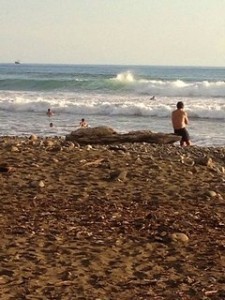 Sitting on a log overlooking the blue Pacific waters, time seems irrelevant. One minute, one hour, only the changing tide and movement of the sun hints at a waning day.
Sitting on a log overlooking the blue Pacific waters, time seems irrelevant. One minute, one hour, only the changing tide and movement of the sun hints at a waning day.
Trees shade the log and our bodies. Occasionally a slight breeze tempers the heat. Waves smash beyond the rocky, gray sand beach. Surfers paddle out past the breaking waves, then wait impatiently, eager to catch a couple of good ones before the surf changes, calms down, and the best part of the day is over.
As the late afternoon lapses, shadows slink across the sand. Folks walk along the beach; others lie on blankets or sit on large rocks, catching the last rays of sun. It is quiet, everyone intent on enjoying the surf and sun, respectful of the peaceful atmosphere. Conversation can commence later.
I am visiting my girlfriend for one week. She and her husband are spending three months in the country, trying to decide whether to make Costa Rica their new home.
My girlfriend and I retreat to a nearby café. Savoring drinks, we sit back and scan our surroundings, concentrating on the people congregating around us.
The scene before us is a jumble of men and women casually dressed in T-shirts and board shorts, relaxing, eating and drinking at tables scattered around the cafe, populating stools around the bar, greeting friends wandering in and out of the open-air establishment. A local begins playing the guitar and harmonica, occasionally forgoing the harmonica and singing in Spanish, bartenders and customers joining in and clapping along with the music.
Waiters and waitresses serve an assortment of customers. They are working hard, sort of. This is Central America and Costa Rica in particular. People work, things will happen, but in good time. No rush. Relax and wait.
Ticos – native Costa Ricans – tourists and ex-pats comprise the mix. Spanish is spoken along with a smattering of other languages, but what surprises me is the prevalence of English heard around us.
It is easy to engage in conversation when the language is your own. We chat with our waitress, the guy at the next table trying to fix my iPad, a couple of realtors, visitors passing through, and the café owner. We observe the on-going stream of tourists strolling up and down the unpaved street, chattering with each other, examining and sometimes purchasing merchandise offered by street vendors.
This is a place individuals seek out when determined to pursue their dreams. Others escape life gone sour in another corner of the universe. Surfers spend years here doing what they love, finding jobs to support themselves and their sporting habit. The laid-back lifestyle and the distance, physically and mentally, from harried lives elsewhere, draw others.
We met the tourist center employee from Mississippi living in the town eight years who would not live anyplace else on earth…the café owner from Atlanta…our kayak guide, originally from New York…our California landlords, 26 years in the rainforest and still loving it.
Street vendors begin packing their wares, preparing to go home for the evening.
Darkness comes quickly to the Costa Rican jungle. Close to the equator, the country experiences approximately 12 hours of daylight everyday – and 12 hours of darkness. By six o’clock in the evening it is almost dark. Twelve hours later the clear blue sky and piercing sun shines on flora, fauna, and you – unless heavy curtains or shutters block the onset of another idyllic day.
There is no pressure to move. Obtaining the check from our waitress takes time. Another waiter comes by our table. Our waitress left for the day. Now, what did you order? He writes down our order and walks away.
We settle back into our chairs. It will be quite a few minutes before he reappears with our bill.
We are in no hurry to leave, enjoying a peek into the routine of ticos and ex-pats living la pura vida – the Costa Rican good life.
No place is perfect, our new ex-pat friends tell us. There are frustrations. Petty theft and political corruption thrive. Too many unpaved, rutted roads, and cars break down often. Patience is a necessary trait. But these people found their paradise on earth.
I look at my girlfriend. What is our dream and do we have the courage to live it? Does she want to live la pura vida?
And what do I want to do? And where? The answer escapes me now. But observing so many people making life-changing decisions motivates me to refocus on what it is I want to do with the rest of my life. And move ahead.
About the Author – Meryl Baer is an ex-financial professional turned freelance writer/blogger. She writes about life’s trials, life at the Jersey shore, food, travel, and any other topic she finds interesting.
Thank you for reading and commenting. Please enter our next Travel Writing competition and tell your story.
The post The Allure of Costa Rica appeared first on We Said Go Travel.
We Said Go Travel
We Said Go Travel is a global community of over sixteen hundred writers with articles from every continent.
Stories are shared with photos and video from a perspective of the transformative power of travel. We Said Go Travel has hosted live and online events as well as travel writing contests around the world. ...more
- Lisa Niver's profile
- 57 followers


